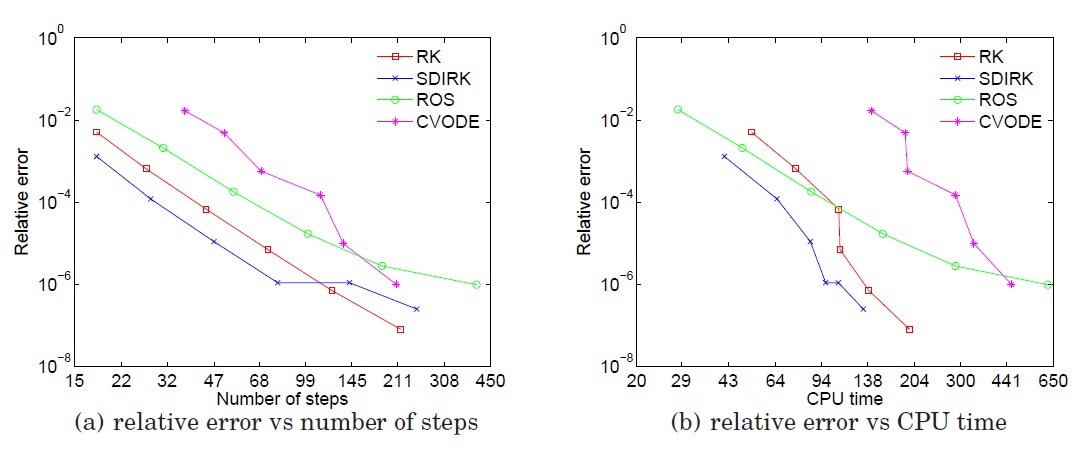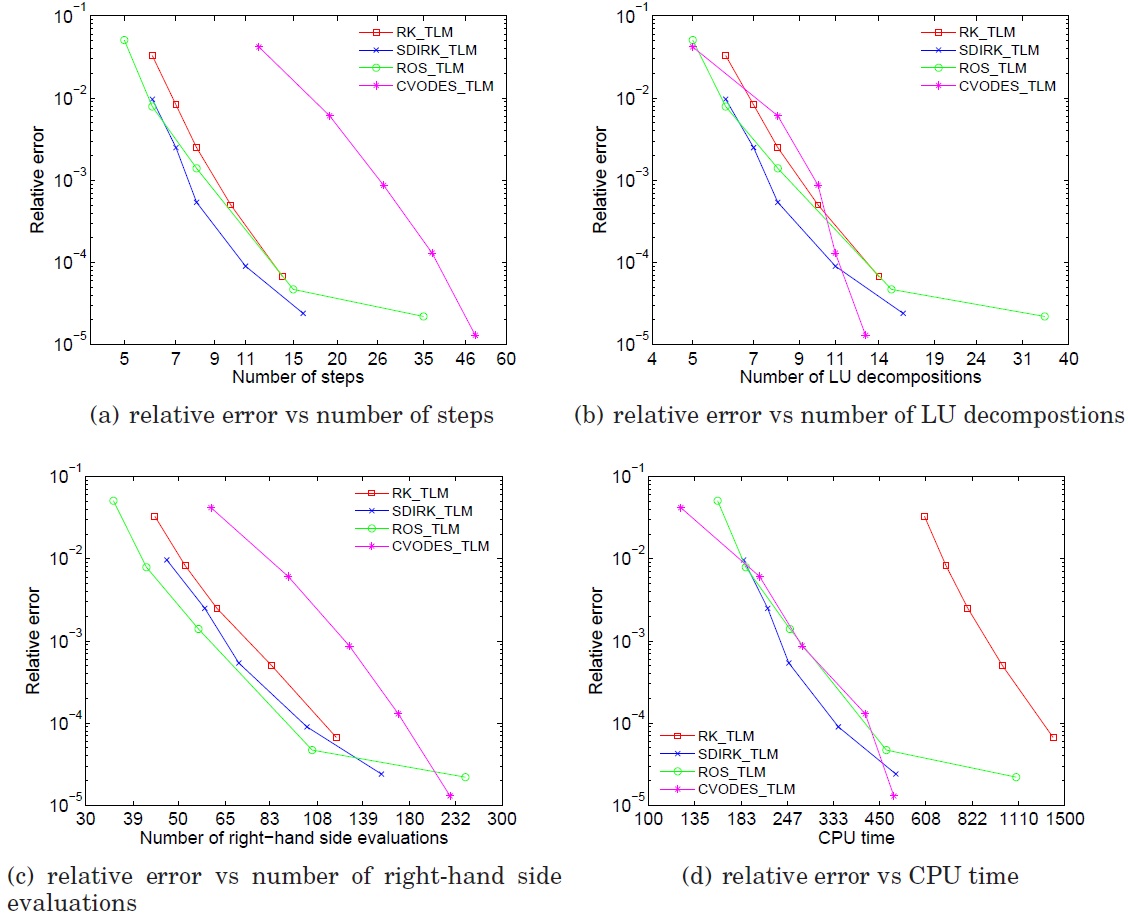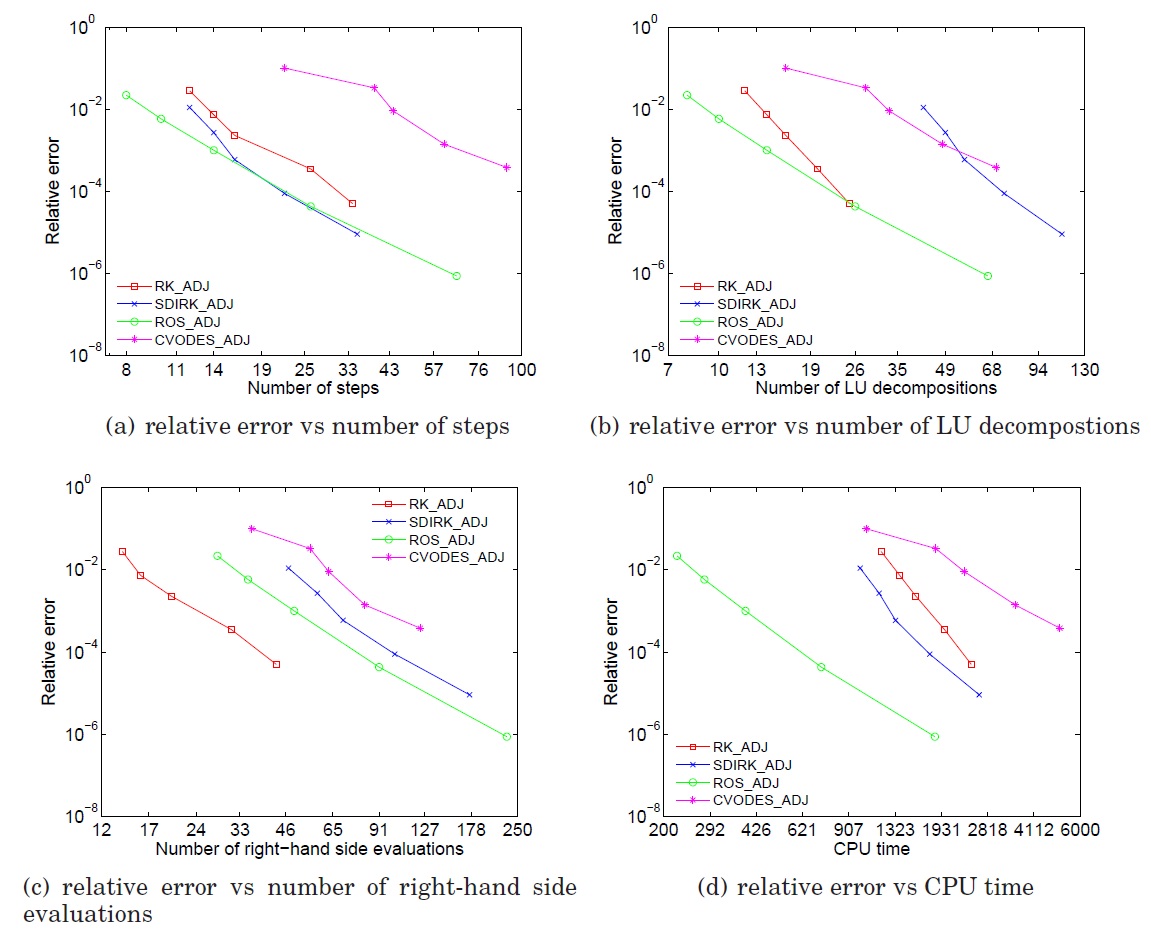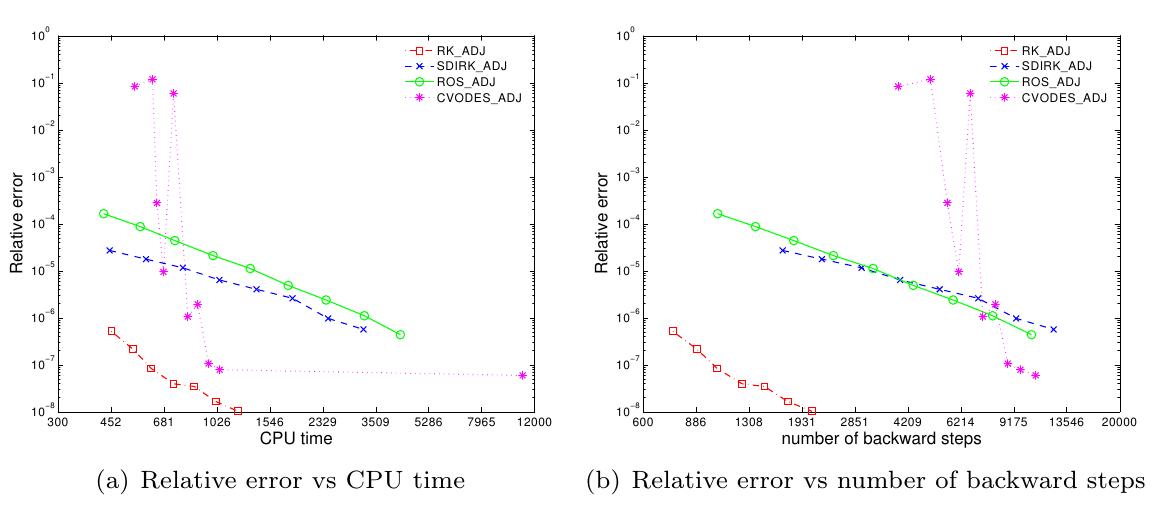Shallow Water Equations
Consider the two-dimensional Saint-Venant system of shallow water equations
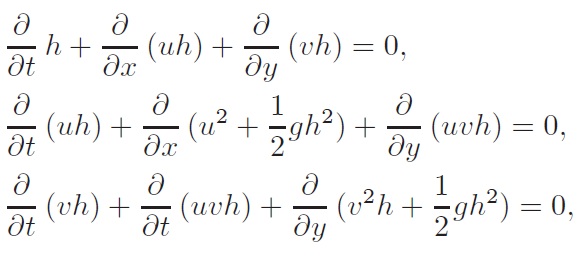
The equations are converted to a semi-discrete form using third order upwind finite differences, resulting in an ODE system which can be solved using FATODE. In our example, the dimension of the resulting ODE system is 4800.
From each family of integrators in FATODE, we select a fourth-order method: Lobtattoc3C, Rodas4 and Sdirk-4a belonging to fully implicit RK, Rosenbrock, SDIRK families respectively. ODE solution results are compared with those from well-established software CVODE using a BDF method. While sensitivity results are compared with CVODES which is an extension of CVODE.
Forward Integration
Tangent Linear Integration
Adjoint Integration
Carbon Bond-IV Mechanism (CBM-IV)
The Cardbon Bond-IV Mechanism, which consists of 32 species and 82 reactions, was developed mainly for urban smog and regional atmospherica modeling. A detailed introduction can be found at here.
The differential equations that describe the CBM-IV are a stiff system in the sense that the equations contain wide variations in time (reaction rate) constants. FATODE can be used not only to solve the ODE system efficiently but also to calculate the sensitivities of individual species with respect to mechanistic parameters (specifically reaction rate constants).
The sensitivities describe the uncertainty in concentrations of various species due to the uncertainties in the reaction rate coefficients and can facilitate researchers to identify important reactions and influential parameters, as well as to better understand the chemical mechanism itself.
